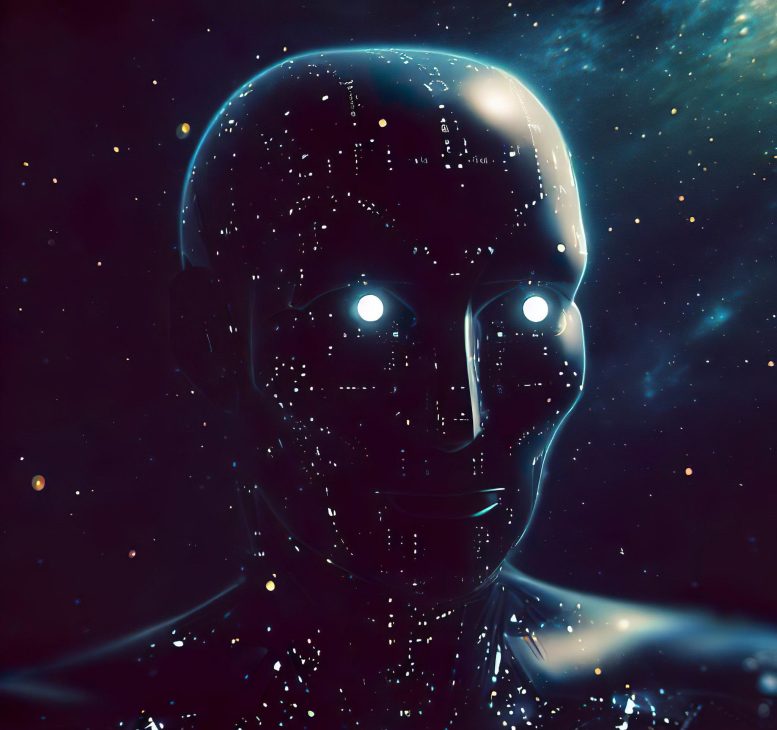
Scientists found that AI struggles with DNA analysis due to “digital dark matter,” missing data that introduces noise. A new computational fix improves AI’s accuracy, making genetic insights clearer and more reliable.
Artificial intelligence has permeated our everyday existence. Initially, it was evident in ChatGPT, and currently, it’s visible in AI-generated pizza and beer advertisements. While AI might not be entirely reliable, it seems that at times, our own handling of AI is not entirely trustworthy either.
Cold Spring Harbor Laboratory (CSHL) Assistant Professor Peter Koo has found that scientists using popular computational tools to interpret AI predictions are picking up too much “noise,” or extra information, when analyzing DNA. And he’s found a way to fix this. Now, with just a couple new lines of code, scientists can get more reliable explanations out of powerful AIs known as deep neural networks. That means they can continue chasing down genuine DNA features. Those features might just signal the next breakthrough in health and medicine. But scientists won’t see the signals if they’re drowned out by too much noise.
So, what causes the meddlesome noise? It’s a mysterious and invisible source like digital “dark matter.” Physicists and astronomers believe most of the universe is filled with dark matter, a material that exerts gravitational effects but that no one has yet seen. Similarly, Koo and his team discovered the data that AI is being trained on lacks critical information, leading to significant blind spots. Even worse, those blind spots get factored in when interpreting AI predictions of DNA function.
Koo says: “The deep neural network is incorporating this random behavior because it learns a function everywhere. But DNA is only in a small subspace of that. And it introduces a lot of noise. And so we show that this problem actually does introduce a lot of noise across a wide variety of prominent AI models.”
The digital dark matter is a result of scientists borrowing computational techniques from computer vision AI. DNA data, unlike images, is confined to a combination of four nucleotide letters: A, C, G, T. But image data in the form of pixels can be long and continuous. In other words, we’re feeding AI an input it doesn’t know how to handle properly.
A Computational Fix for More Accurate DNA Analysis
By applying Koo’s computational correction, scientists can interpret AI’s DNA analyses more accurately.
Koo says: “We end up seeing sites that become much more crisp and clean, and there is less spurious noise in other regions. One-off nucleotides that are deemed to be very important all of a sudden disappear.”
Koo believes noise disturbance affects more than AI-powered DNA analyzers. He thinks it’s a widespread affliction among computational processes involving similar types of data. Remember, dark matter is everywhere. Thankfully, Koo’s new tool can help bring scientists out of the darkness and into the light.
Reference: “Correcting gradient-based interpretations of deep neural networks for genomics” by Antonio Majdandzic, Chandana Rajesh and Peter K. Koo, 9 May 2023, Genome Biology.
DOI: 10.1186/s13059-023-02956-3
The study was funded by the National Institutes of Health and the Simons Center for Quantitative Biology.
Never miss a breakthrough: Join the SciTechDaily newsletter.
Follow us on Google, Discover, and News.
2 Comments
2 Corinthians 10:5
Casting down imaginations, and every high thing that exalteth itself against the knowledge of God, and bringing into captivity every thought to the obedience of Christ.”
Question: -If the computer artificial intelligence modals are not activated by usage (in that no access of use is being created through queries or applied through prompts, etc.), “Is the AI ‘machine’ [inherent in the parameters of computer and web: locus] inert? That is, precisely not in use until new ‘data’ harnesses access to it’s platform and it then becomes, so to speak, functional/functioning? Does it require input to become active, otherwise being static/inert? “
Paul would probably cast down everything I like. I don’t entirely understand your question, but it reads like “If a tree falls in a forest, does it make a sound?”. AI can be left to run on its own, as if by a watchmaker god, staying active so long as the computer runs the program, but this is “weak-AI” that never becomes anything more than inert.
The premise of the article is that scientists are being overrun by the noise AI generates, and I think saying some of the result has to be automatically disregarded. That shows the intelligence is lacking in the artificial. An intelligence can search out the signal and disregard the noise; to go biblical like JAG, Luke 3:17, “His winnowing fork in his hand, clearing his threshing floor to gather the wheat, but the chaff he will burn”